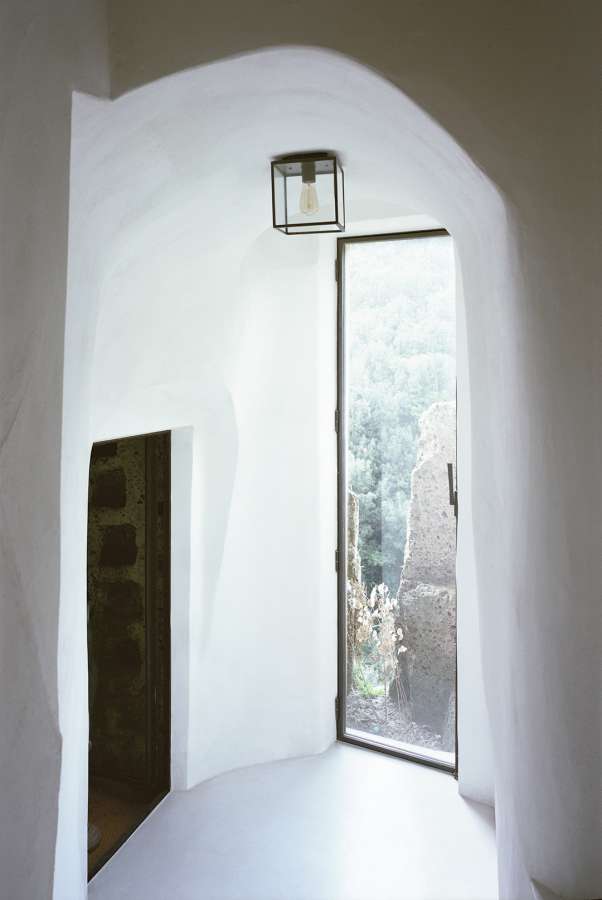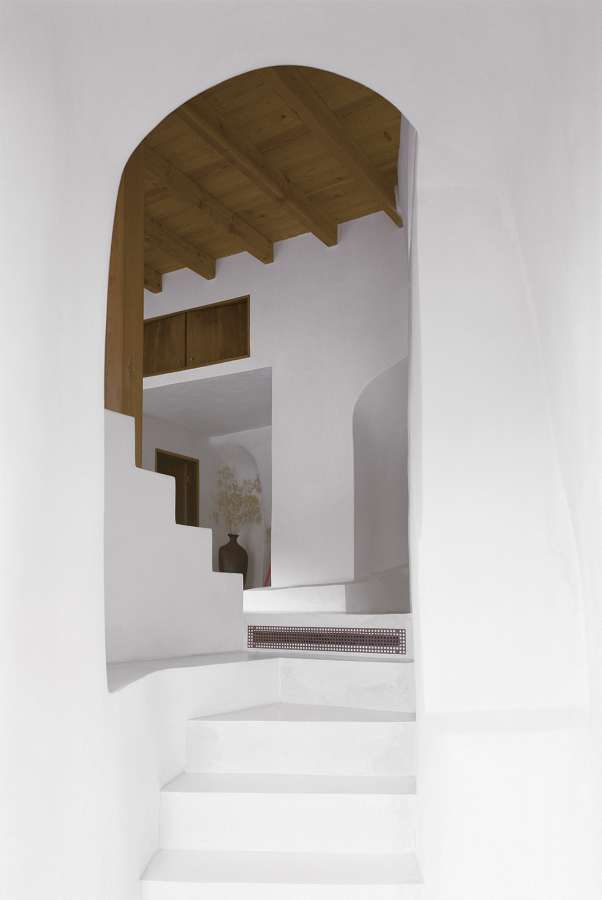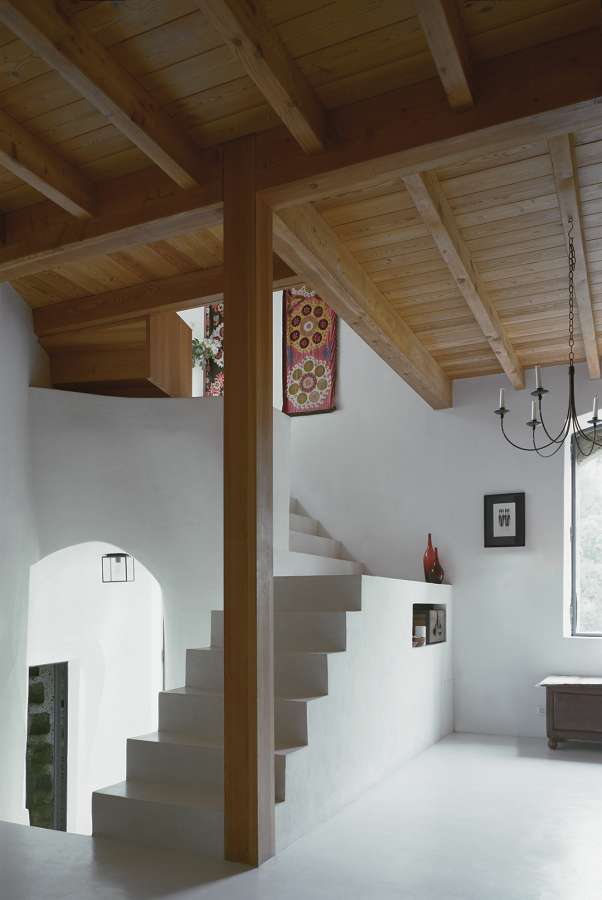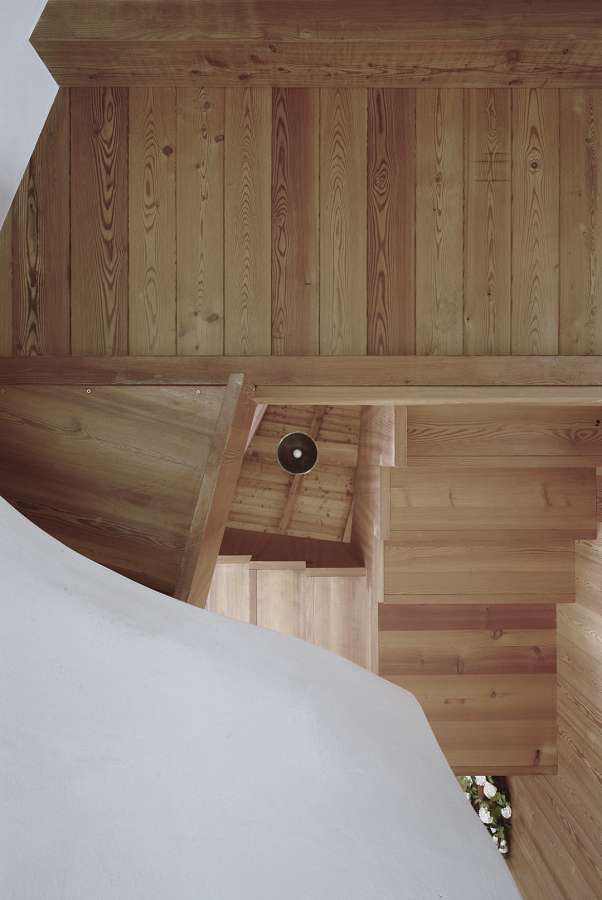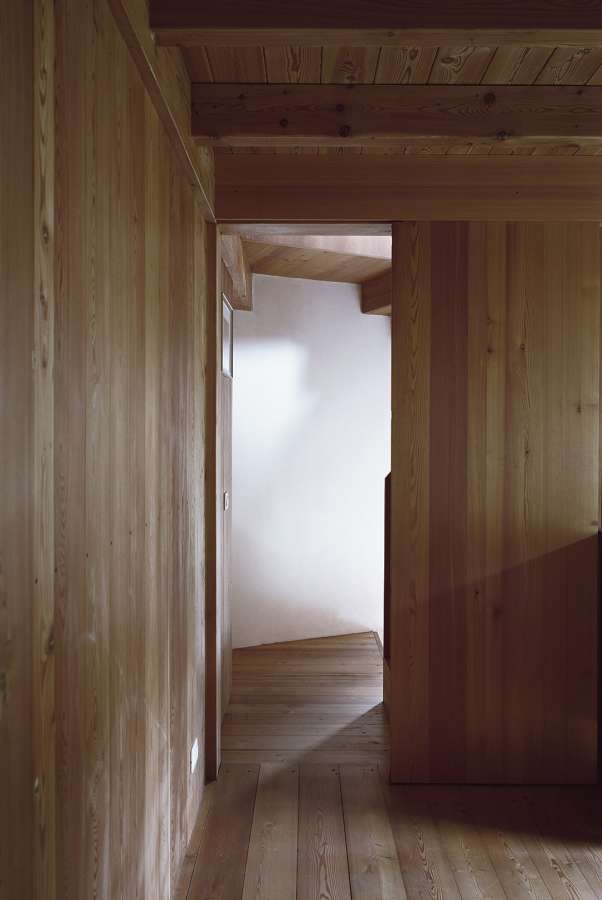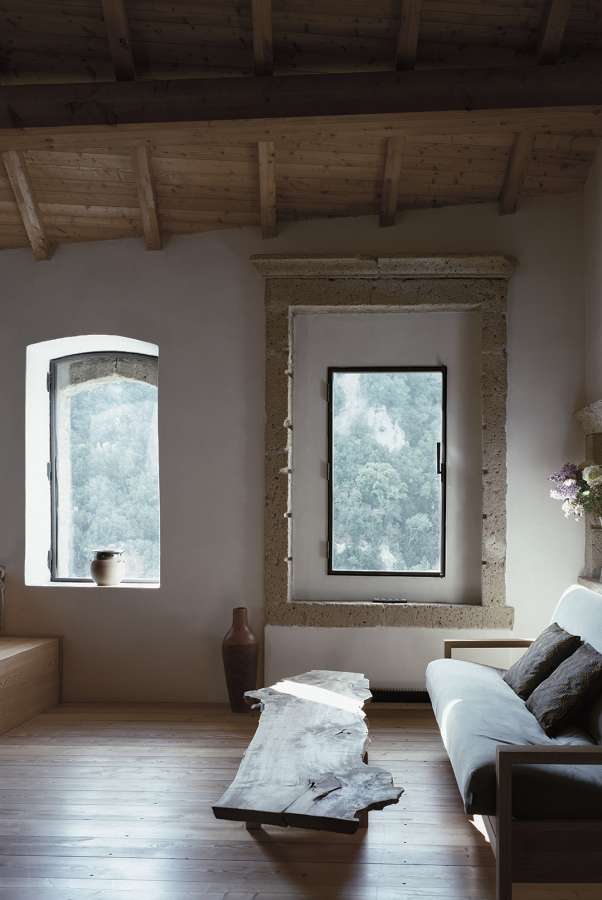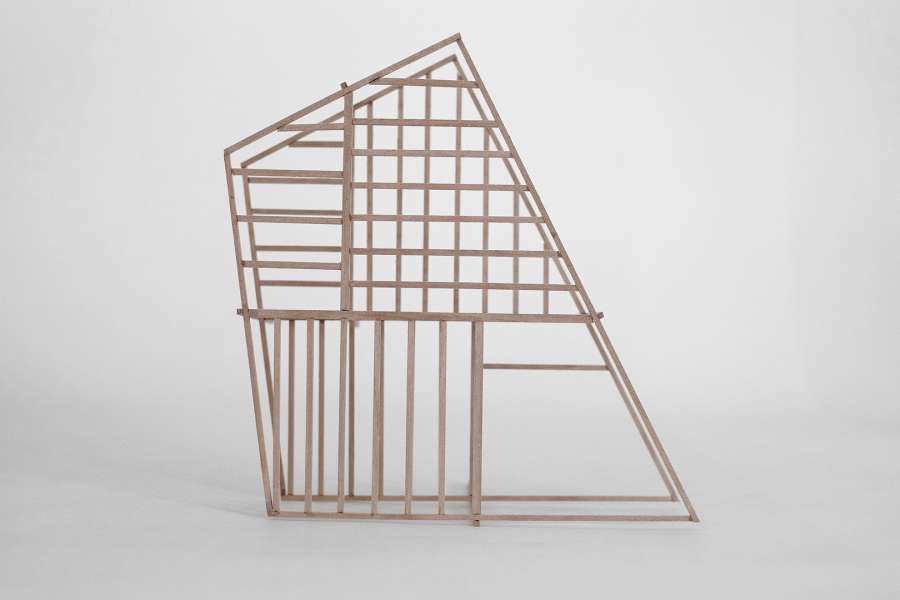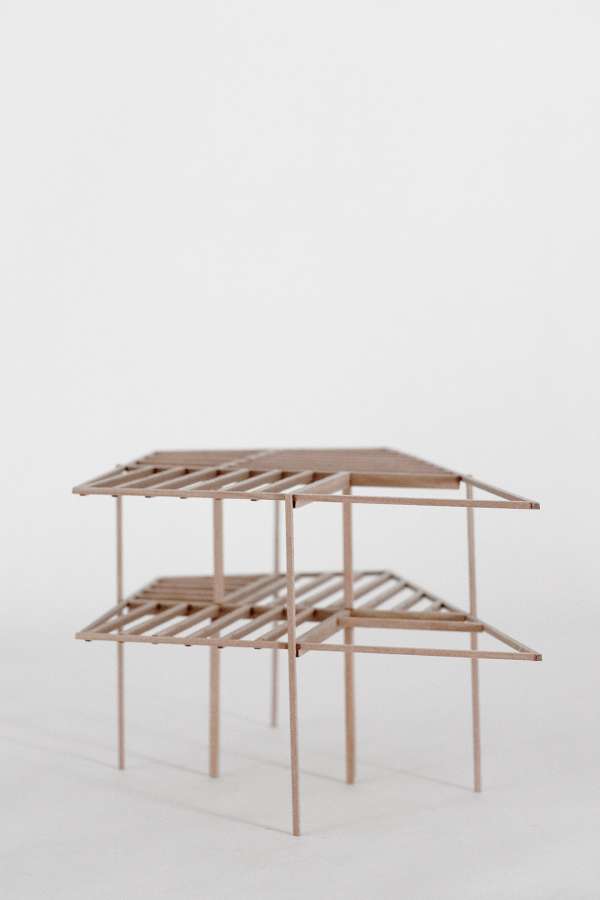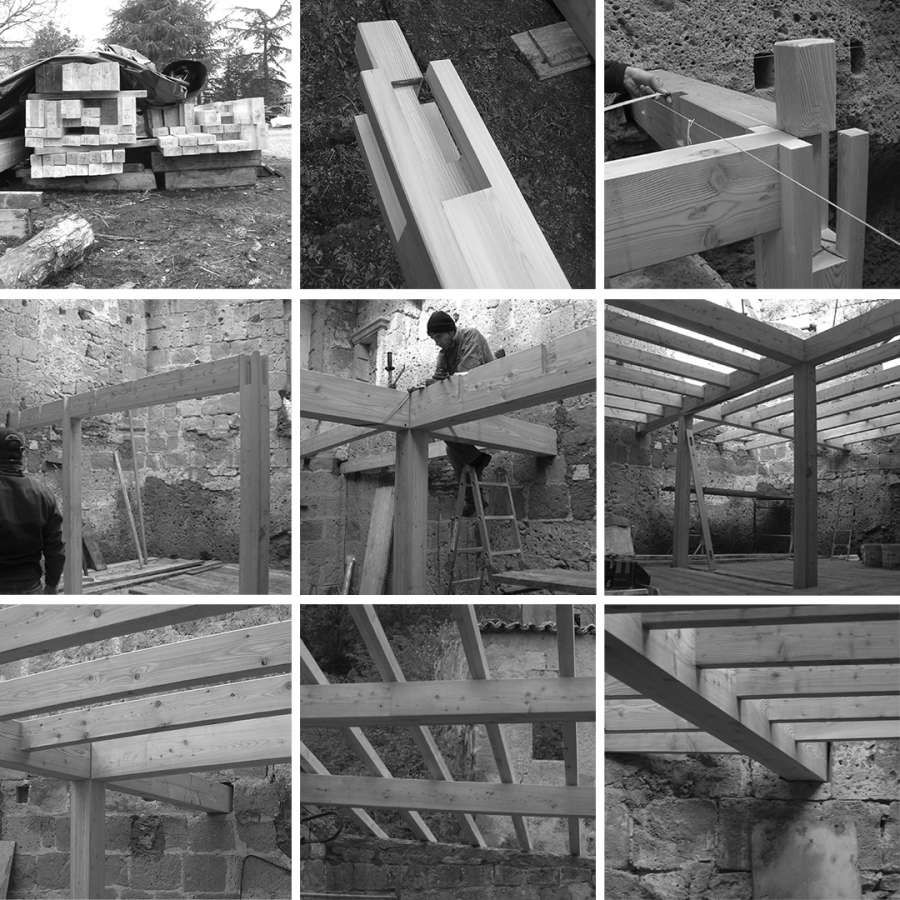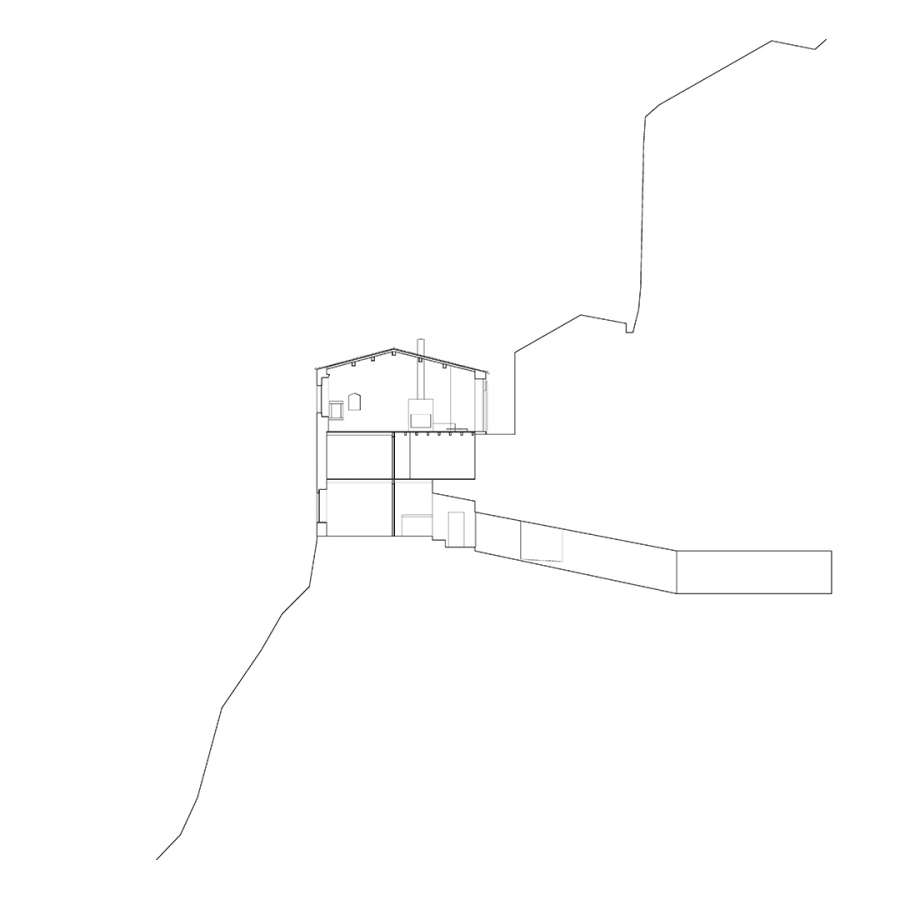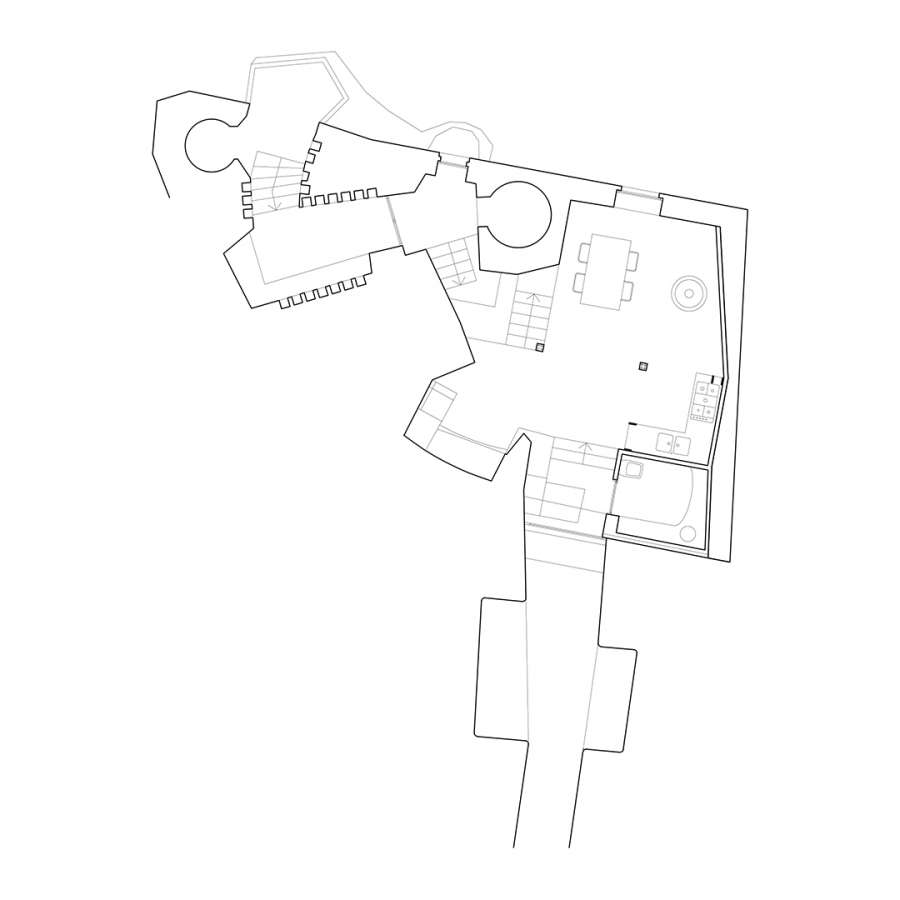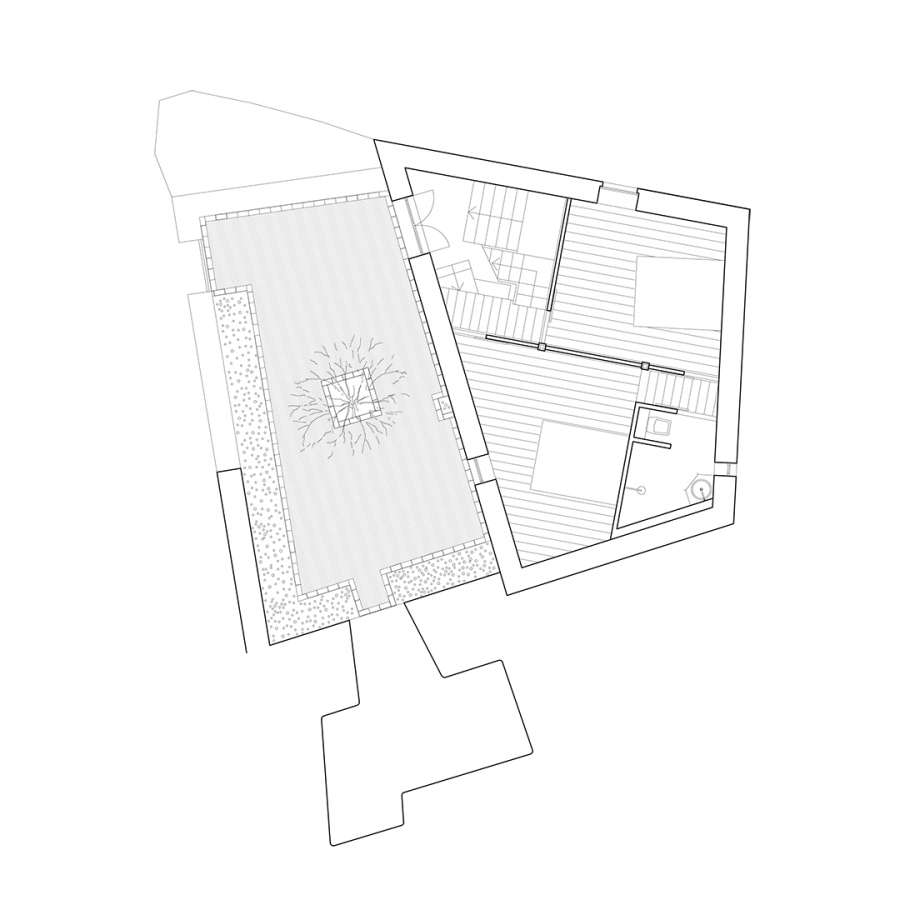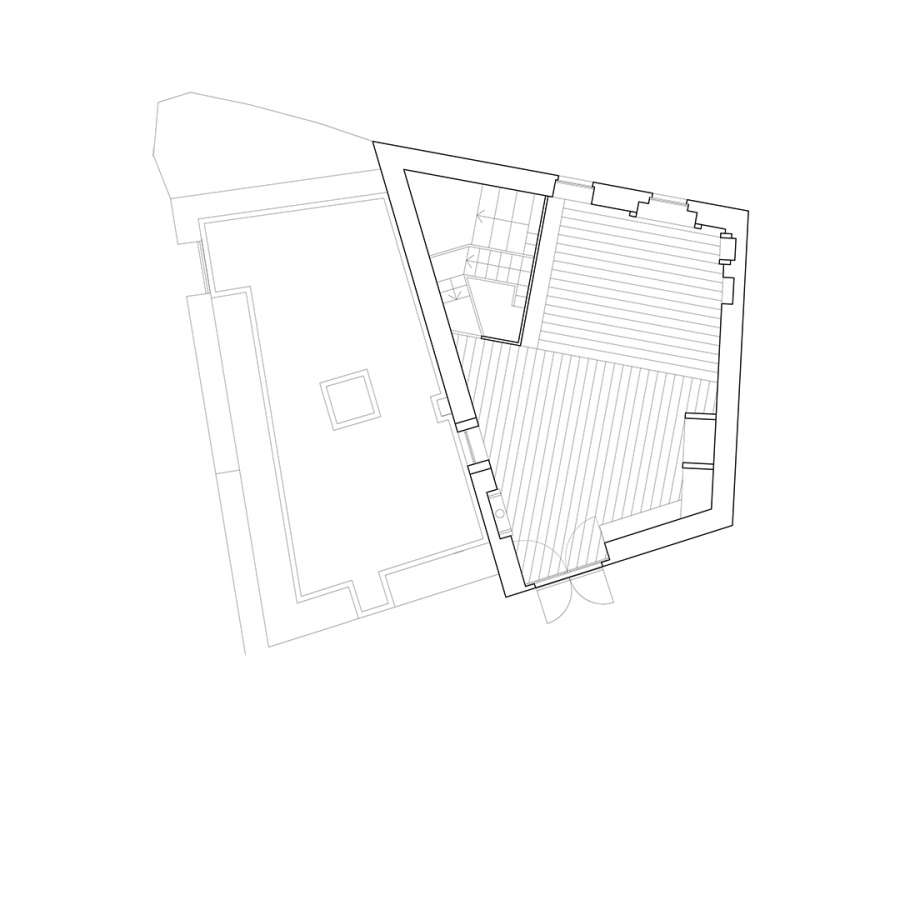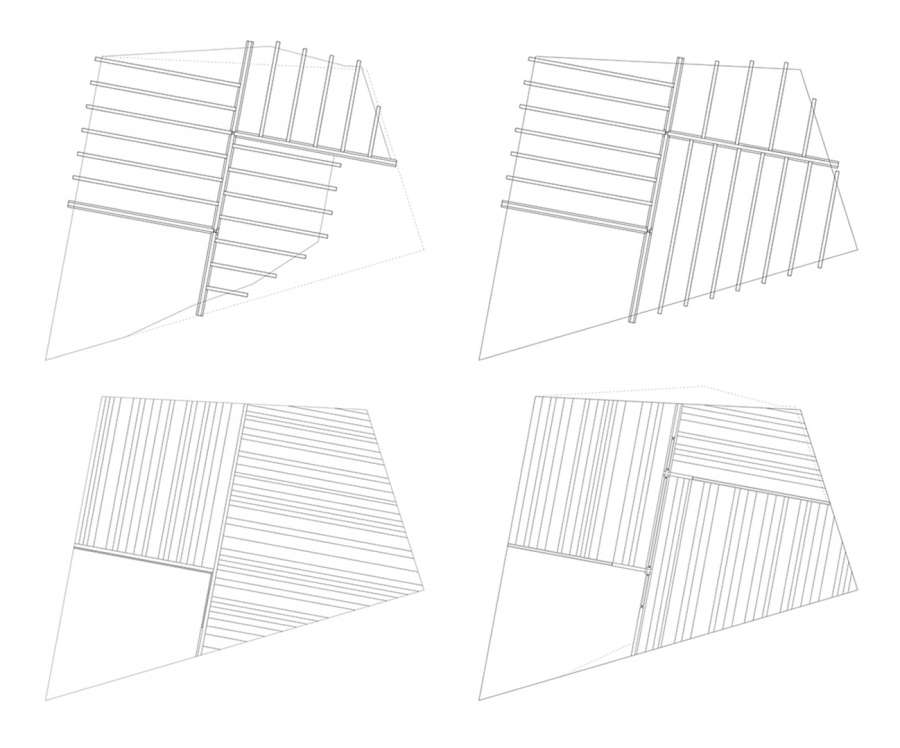r08 - green crane house, sorano, italy, 2007-2010
The existing building has a fairly compact volume of 6 x 8 x 9 m.
The existing artefact, for one third carved into the tuff and the rest built in elevation on 3 floors of a faced core stone masonry, appeared in a serious state of disrepair.
The existing masonry has been preserved, as well as the pagination of the windows and niches; the masonry shell has thus become the background for a wooden construction that organizes the domestic spaces.
On the ground floor there is a living area, with kitchen, dining room and access to the tuff cellar and to a dovecote; on the middle floor is arranged the sleeping areas, with two bedrooms and a bathroom and the second floor is another living area, one large room with a chimney.
A spiral staircase gives access to the different levels of the house; here one can perceive the full height of the house.
The new construction is a massive larch wood assemblage, where all parts are joined without the use of metal fixation elements, but merely wooden sticks and glue.
The decision to use wood as a building material for all the new structures was derived from the need for a lightweight construction, to make no significant changes to the load distribution of the existing structure, and from the desire to interpret local building traditions.
The wish to achieve the minimal dimensions possible for each single element of the structure made it necessary for each of the parts to act in collaboration: pillars working together with beams, beams and joists working together with boards.
The wooden structure arrangement defines the sphere of the house with its own individuality and cooperates with the overall stability of the thin construction.
Contemporary technique becomes a tool to practice antique logic. In Japanese “kiwari” means dividing wood or determining proportions.
The new wooden construction is a precise application of wood carpentry tectonics, as counterpoint to the organic and sensual labyrinth of the existing building and caves.
There are 2 wooden pillars with a section of 16 x 16 cm, 312 cm high on the ground floor and 244 cm on the first floor; each pillar is an assemblage of more minute elements: a core element 8 x 8 cm surrounded by joists 4 x 4 cm and 4 x 8 cm.
This technique has allowed elements of complex geometry and of considerable strength to be realized, following a logic of juxtaposition of fibres similar to the manufacturing techniques of the vessels trees.
The heads of the pillars were developed to join with beams and other pillars. The chestnut planks, of both vertical partitions and floors, stiffen the wooden score.
The wood carpentry work on site has been extremely short: 2 days for the ground floor, 2 days for the first floor, 3 days for the roof.
